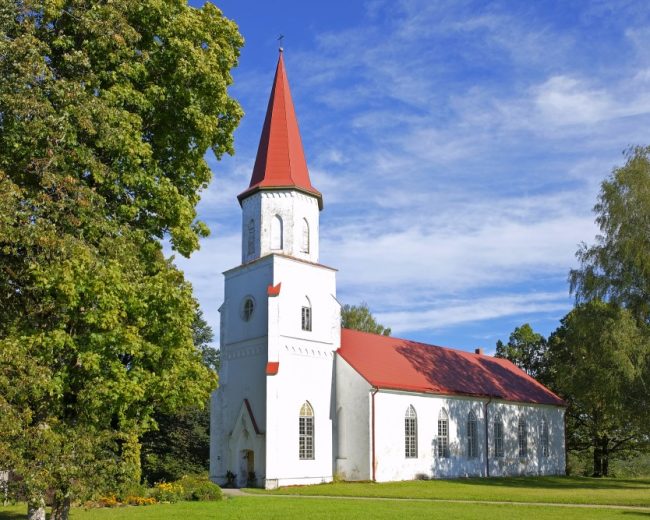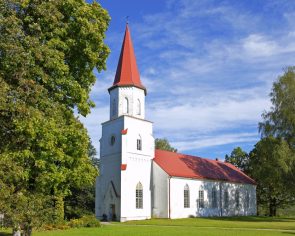Skujene Lutheran Church and castle ruins
This place is basically a complex consisting of church, castle and manor ruins, and ancient graves!
Next to the church there is a well-kept park, ancient graves and the remains of the Skujene castle ruins/manor. They are located at the top of the hill, which is bounded on the south-eastern side by a ravine through which the Amata river flows. There is also a natural ravine on the northeast side, but both other sides of the hill are bordered by a 3-5 m deep ditch 20 m wide.
The place is suitable for visitors of different ages.
The place is available for a large number of visitors.
The parish in Skujene was first mentioned in writings in 1444. It is known that the oldest Lutheran church in Skujene was destroyed during the Livonian War. A new wooden church was built in 1668. A brick church was built in 1780. In 1901, the construction contractor Menģelis built a large extension and a new tower for the church. In 1903, the church acquired an organ and it was counted among the best rural congregations at that time. Instead of an altar, the church has a crucifix made by an unknown artist in 1772. During World War I, the bell was taken to Russia and never returned to its old place. The congregation purchased a new bell later.
In historical sources, the Skujene castle (Schujen) is mentioned starting from 1440. However, there is an opinion that the castle had already been built in 1250. It was burned in the spring of 1559, during the Livonian War, when it was occupied by the troops of Ivan IV. Only fragments of the Skujene medieval castle have survived to today because the castle ruins were removed and used for the construction of buildings of the Skujene manor. Currently, the ruins on view in the territory of the medieval castle are the remains of two buildings of the Skujene manor. The modern settlement grew during the Soviet years as a village of the Soviet farm "Skujene".
The place is available at any time of the year.


Working time
This place is always available.

